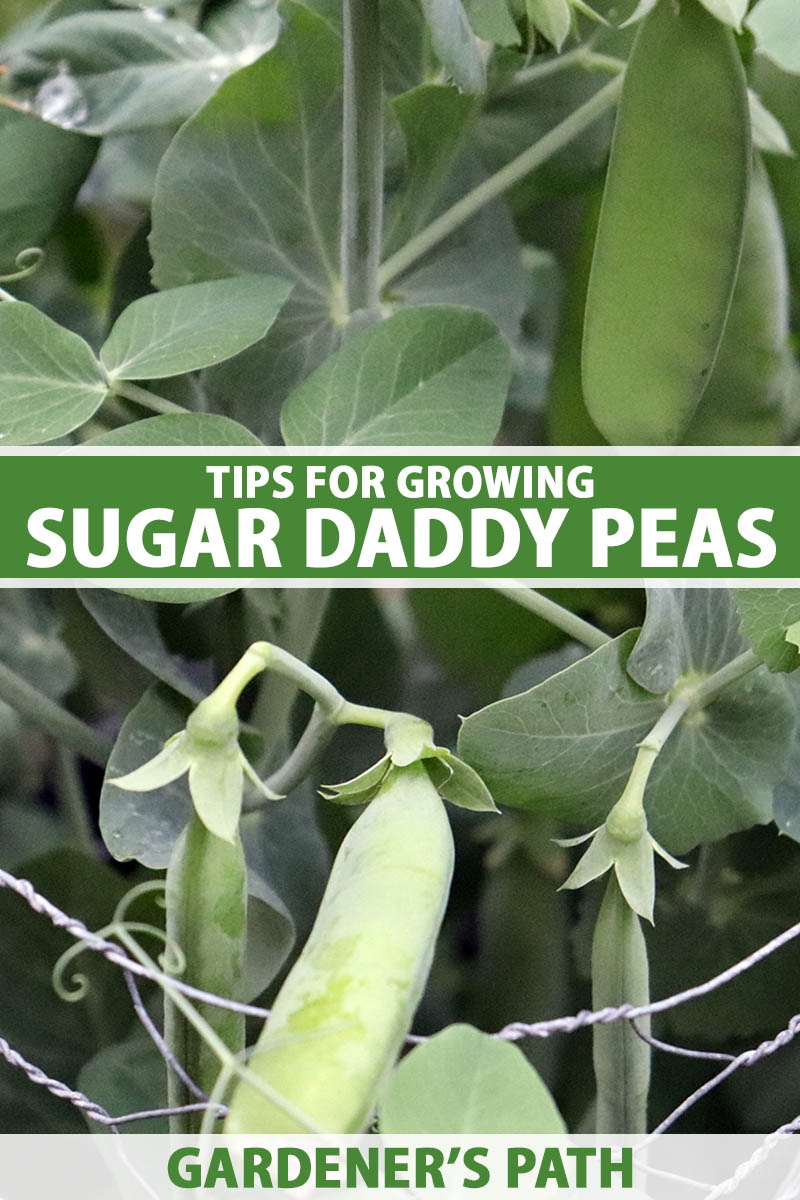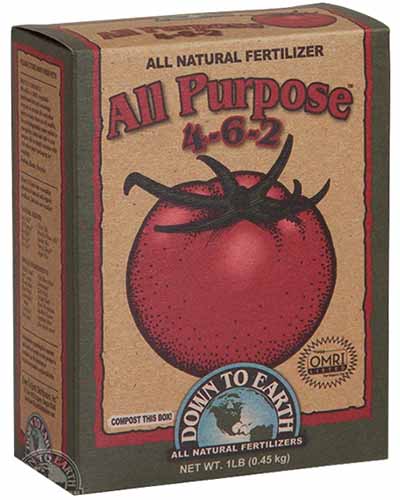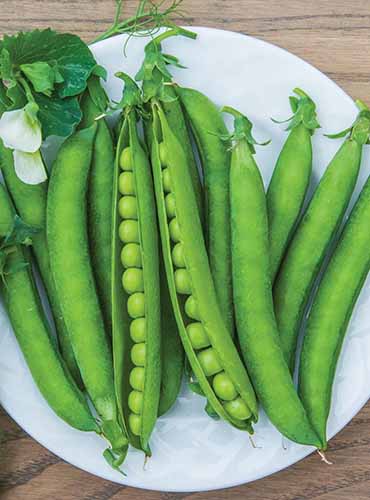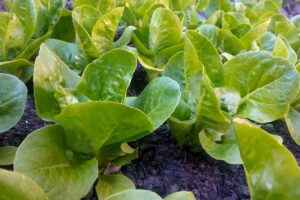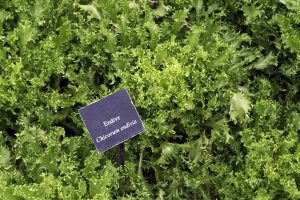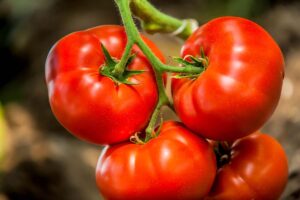Pisum sativum ‘Sugar Daddy’
Is there anything more refreshing than biting into a sweet, crispy snap pea?
‘Sugar Daddy’ might be one of the crispiest and sweetest you have ever tasted. And if you hate the annoying strings found on some cultivars, boy, will you love this one.
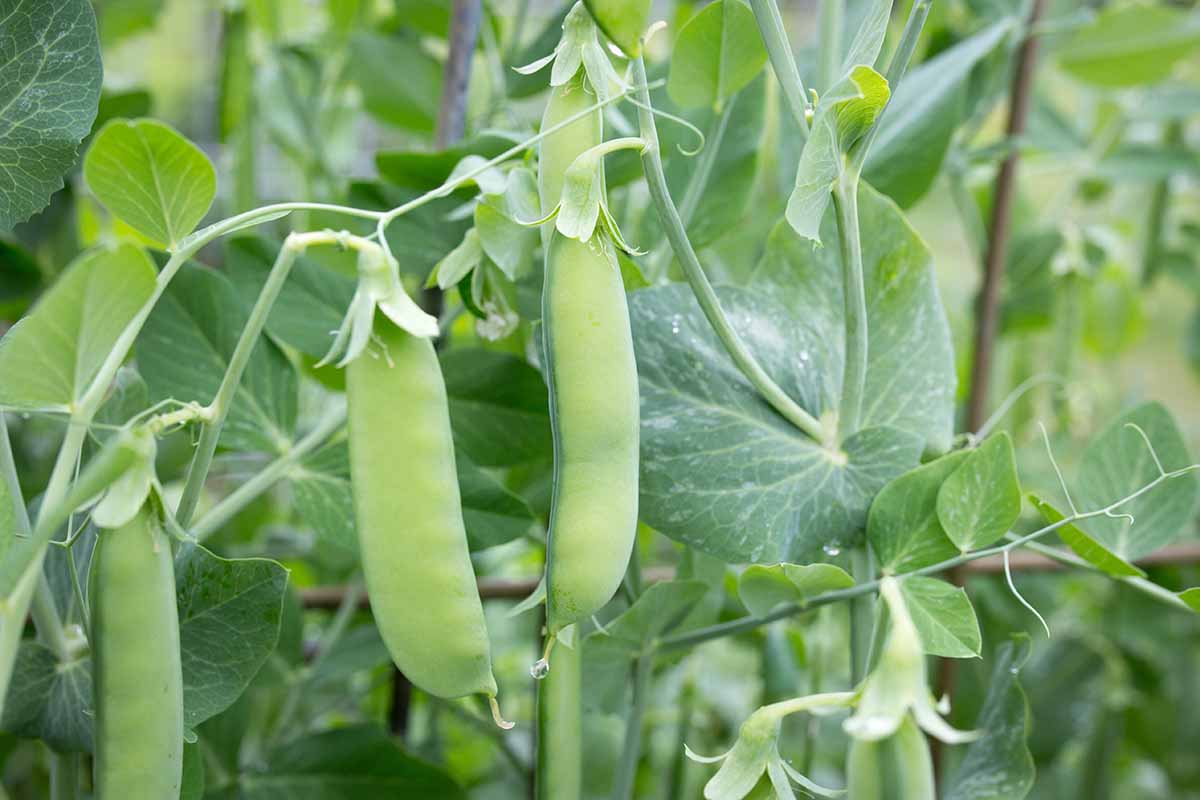
We link to vendors to help you find relevant products. If you buy from one of our links, we may earn a commission.
The edible pods are stringless, so when you bite into them, you won’t be inadvertently flossing your teeth.
The plump, juicy peas inside are so delicious that you can also eat them like shelling peas and skip the shell altogether if you prefer.
If you’ve grown peas before, you know they’re one of the easier plants to grow, and ‘Sugar Daddy’ is no exception. If you haven’t, check out our guide to growing peas for some tips.
This guide will lay it all out, and here’s what we’ll discuss:
What You’ll Learn
Ready to meet your ‘Sugar Daddy?’ Let’s jump in:
Cultivation and History
We have Dr. Calvin Lamborn to thank for ‘Sugar Daddy.’ Actually, we have Dr. Lambon to thank for sugar snap peas, in general.
As the research director of the Gallatin Valley Seed Co. in Twin Falls, Idaho, he bred the first sugar snap and released it to market in 1979.
There were likely edible pod peas for centuries before that, but they weren’t commercially or widely available, so he gets the credit for bringing them to the masses.
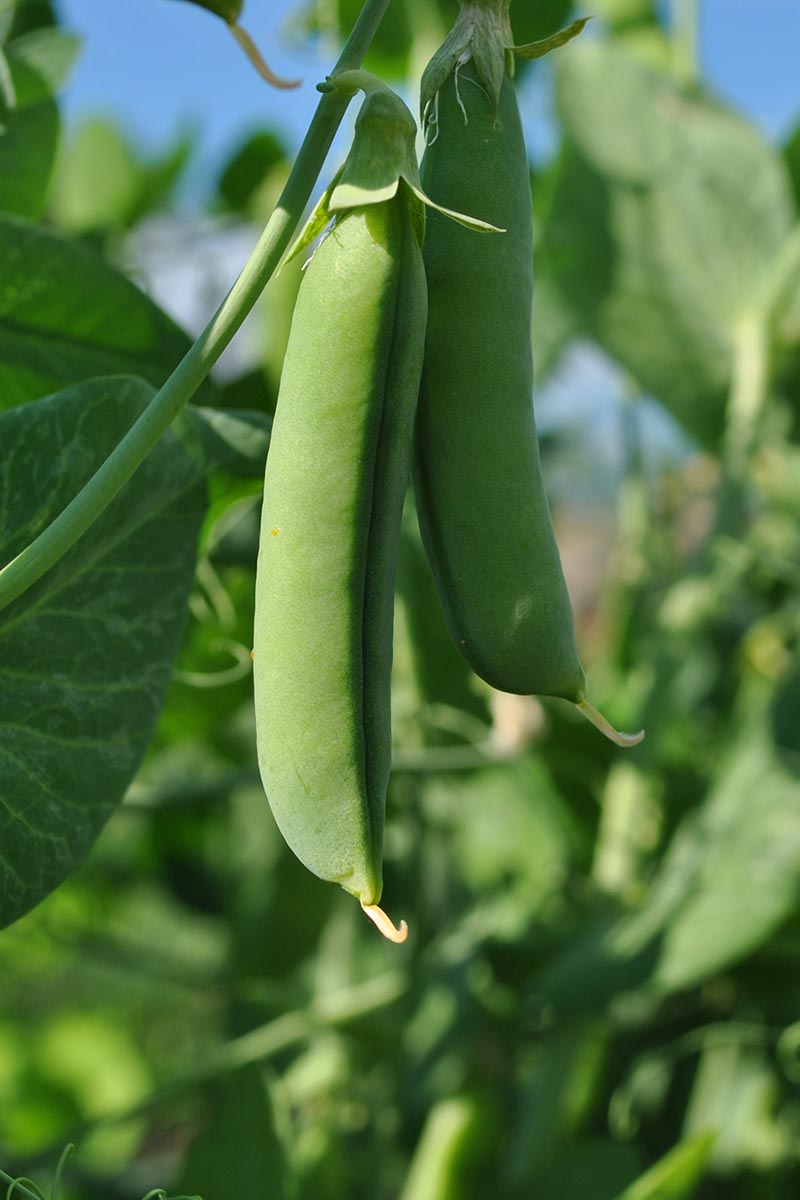
He bred ‘Sugar Daddy,’ originally named ‘String Sugar Snap II,’ releasing it in 1983.
The edible pods are about three inches long and extremely crisp. The flavor is sweet and herbaceous with a hint of floral.
The plant is a semi-dwarf type that grows just 18 inches tall, but the harvest is prolific. Each plant grows an abundance of pods.
‘Sugar Daddy’ Pea Propagation
The easiest way to get started is to sow seeds either directly in the garden or indoors.
You can sometimes find transplants available at nurseries, but it’s so easy to start from seed that there’s really no point in paying more for seedlings unless you want someone to do the early work for you.
Before you sow or transplant outdoors, work in a good amount of well-rotted compost to your planting area. Compost loosens up heavy soil and aids water retention in sandy soils. It also adds nutrients. It’s a triple wonder.
It’s best to grow ‘Sugar Daddy’ in the spring or fall because the plant prefers cool temperatures.
You may be successful growing it in the summer, but you might need to provide some shade during the hottest days. Try to grow the plants during a period when temperatures won’t go above 85°F.
From Seed
To start indoors, fill one or more four-inch pots with seed starting medium and moisten the medium so that it feels like a well-wrung-out sponge.
You don’t want it soggy or too dry. Press a single seed into the center of each container and gently push it in twice as deep as its diameter – or about an inch.
Place the pots somewhere they will receive at least six hours of direct light per day or provide supplemental lighting.
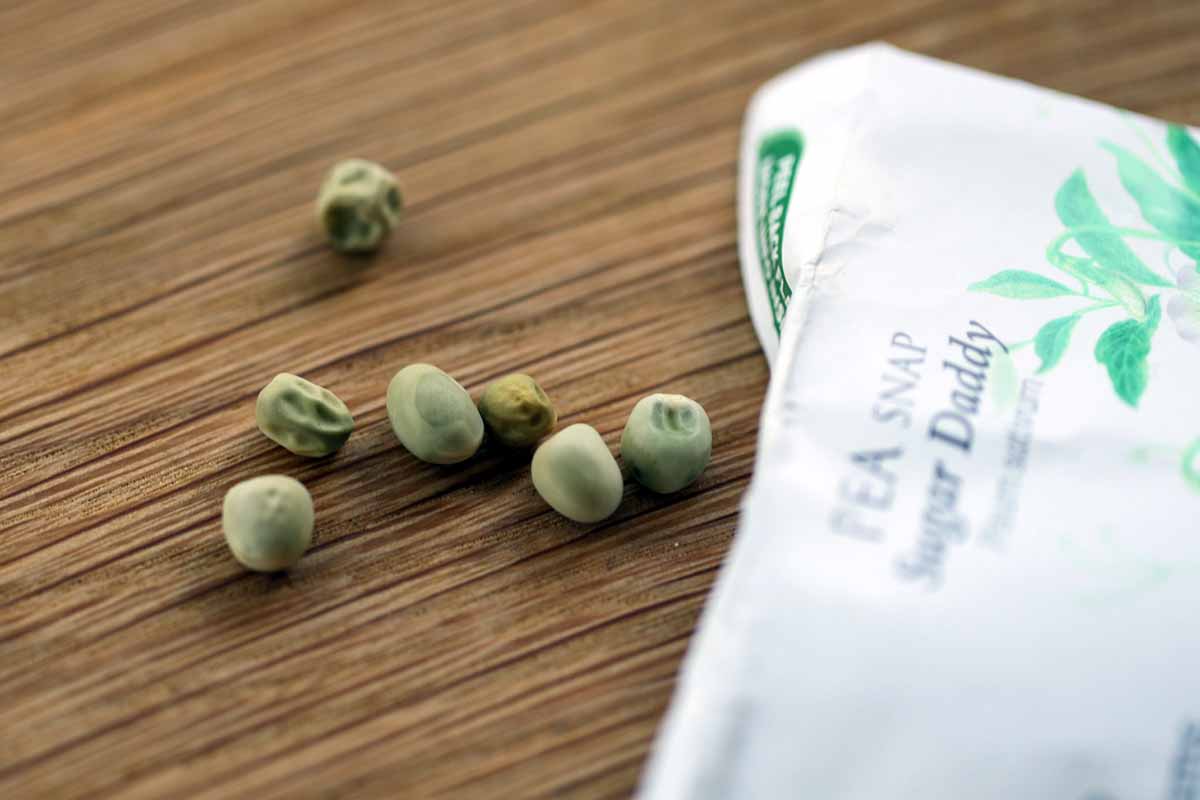
Harden seedlings off for a week before you put them out in the garden to prevent transplant shock.
To do this, take the containers outside to where they will ultimately be planted and set them in place for an hour. Then, bring them back in.
The next day, take them out for two hours, adding an hour each day over the course of about a week.
You can also sow directly outdoors as soon as the soil can be worked.
Prepare the soil by working in some well-rotted compost and sow each seed an inch deep and one foot apart.
You don’t need to provide support, but if you choose to use it, put it in place at planting time. Keep the soil evenly moist as the seeds germinate, which should take 10 to 20 days.
Transplanting
If you start seeds indoors or you find seedlings at a nursery, prepare the soil by working in lots of well-rotted compost, then dig holes about the same size as the growing containers.
The plants should be spaced about a foot apart.

Gently remove each seedling from its pot and lower it into the hole before firming up the soil around it. Don’t bury it any deeper than it already was in the container.
Water the soil well and keep it evenly moist but not waterlogged.
How to Grow ‘Sugar Daddy’ Peas
Peas need lots of sun. Preferably full sun, though you might get away with growing them in partial sun, but you’ll probably have a smaller harvest.
If you live somewhere with hot summers or surprise spring or fall heatwaves, either provide afternoon shade or be prepared to protect the plants during the hottest periods.
When temperatures climb above 80°F, cover the plants with shade cloth during the day and uncover them at night.
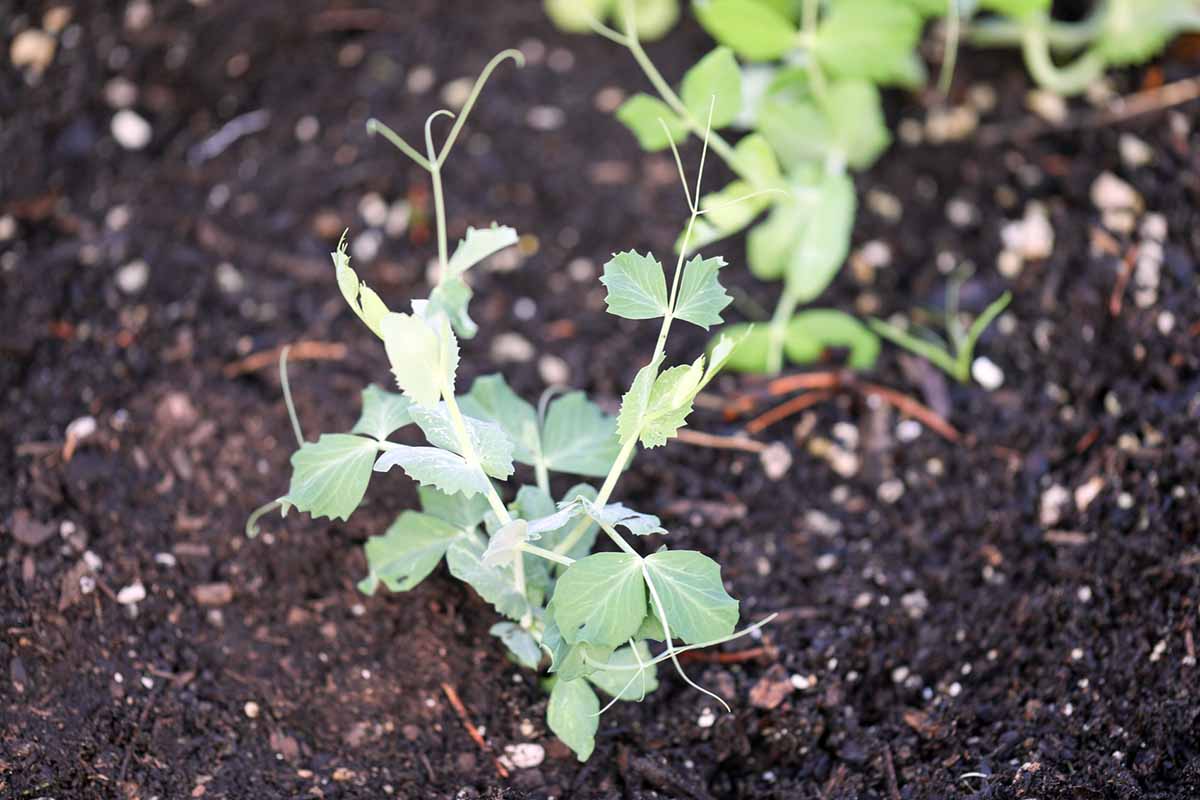
I’ve used umbrellas in a pinch, so don’t feel like you need to buy a bunch of expensive equipment.
They also need consistently moist soil, but I don’t mean soggy and wet. Moist soil should feel like a well-wrung-out sponge and should just hold together if you ball it up in your hand. If you toss it up in the air, the soil ball will come apart.
If you make a little ball and it falls apart when you open your hand, it’s too dry. If you ball it up and water squeezes out, it’s too wet.
You can help the soil retain moisture by putting a layer of straw or well-rotted compost around the plants, keeping it an inch or two away from the stems.
Soil pH doesn’t matter too much, but aim for something between 6.0 and 7.5.
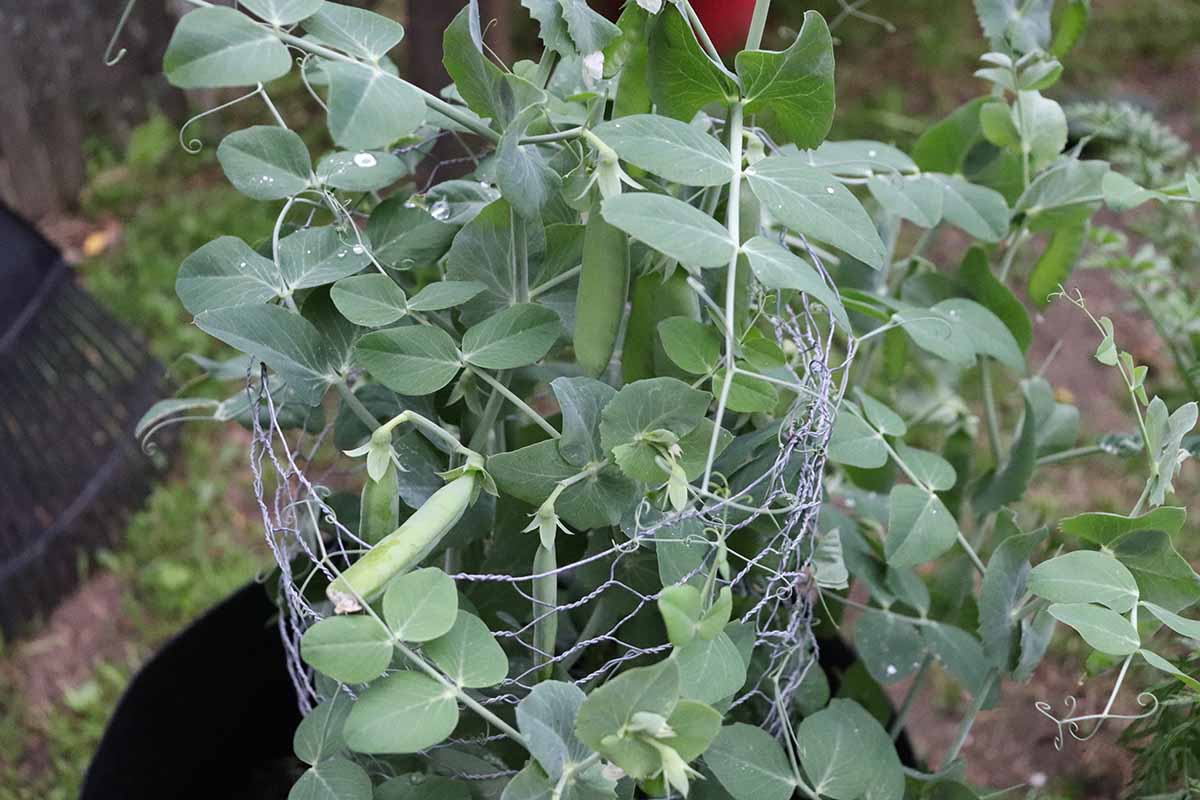
The plants will support themselves, so don’t worry about giving them something to climb on if you don’t want to. But if you wish, you can certainly give them some kind of support to scale.
I’m assuming that you worked in compost before planting. If so, don’t bother fertilizing your ‘Sugar Daddy.’
If you forgot this step, top dress with some all-purpose vegetable fertilizer once the plants have reached their full height of 18 inches tall.
I’m a huge fan of Down to Earth’s All Purpose food. It’s made with organic ingredients and comes in a compostable box. All of my plants thrive when I use this product.
Down to Earth All Purpose Fertilizer
Grab a one, five, or 15-pound box at Arbico Organics.
Because of its compact shape, ‘Sugar Daddy’ is ideal for growing in a container.
Since the plant is more compact than many other cultivars, it does well even in small containers. A gallon pot would be totally fine, so long as it has drainage holes.
Growing Tips
- Grow in full or partial sun.
- Keep the soil consistently moist.
- Feed with an all-purpose food when the plant reaches its mature height.
Maintenance
Make sure the mulch stays in place and refresh it as needed.
If any weeds start to sneak through, get rid of them immediately, as they compete for resources and can play host to pests and diseases.
Other than that, you just need to pinch the plant as it grows to encourage bushiness, if necessary.
You might also need to provide support if the plant becomes leggy or during extremely windy periods.
Where to Buy ‘Sugar Daddy’ Peas
‘Sugar Daddy’ isn’t the most common cultivar out there, but it isn’t particularly difficult to find. You’ll find seeds at lots of local nurseries and several online retailers.
For example, you can buy 200 organic seeds at Burpee, or 25 grams, four ounces, or one, five, or 25 pounds at True Leaf Market.
Managing Pests and Disease
Deer and rabbits seem to adore pea plants. I swear they can sense them from a mile away, and they’ll make a direct beeline to devour the plants. They can kill a young plant in one night and a mature specimen nearly as fast.
Exclusion is the best technique, so deer fencing or cages are going to be your friend.
Aphids, slugs, and snails are going to be your biggest challenge. Aphids can be dealt with by spraying the plants with a strong stream of water once a week.
Slugs and snails can be addressed using your preferred method. I use slug pellets, but you can read our guide for other options.
When it comes to disease, keep an eye out for powdery mildew and fusarium wilt. If you see a powdery white coating on the leaves, read our guide to powdery mildew to learn how to address it. Fortunately, this cultivar is largely resistant, but never say never.
Fusarium wilt on peas is caused by the fungus Fusarium oxysporum and results initially in the leaves at the base of the plant turning yellow, followed by the plant wilting.
It moves through water, soil, on equipment or tools, and via pests. Once it’s in the soil, the pathogen can live for years and you can’t eliminate it.
For that reason, you should rotate your crops regularly. Nightshades and peas should only be planted in the same place once every ten years if fusarium is a problem in your area.
Harvesting ‘Sugar Daddy’ Peas
‘Sugar Daddy’ will mature in about 65 days, with the pods ripening at various times.
You can tell it’s harvest time because the pods will be large and plump. Snap one open and taste the peas inside. That’s the best way to be sure.
Once they’re ready, gently pull the pods off the vine. You don’t need to harvest them all at once, but don’t leave them too long or the pods will become bitter.
If they start turning yellow, they’re overripe, and will be woody and hard so you won’t want to eat them.
Preserving
If you intend to eat your peas soon after harvest, you can place them in a perforated or paper bag and put them in the refrigerator crisper drawer where they’ll keep for up to a week.
If you want to keep them for longer, boil the peas for just a minute or two, dry them, and place them on a cookie sheet.
Place this in the freezer until they’re frozen hard. Put them in a bag and stick the bag in the freezer, where they’ll keep for up to a year.
Recipes and Cooking Ideas
Fresh peas are wonderful in summer salads! My grandma used to break up two cups of sugar snap peas and toss them with one small chopped onion, preferably purple.
Then, she’d add the juice of one lemon, a big splash of white vinegar to taste, and some olive oil – about two or three tablespoons. Mix it together and let it sit for a few hours before adding salt and pepper to taste, then dig in!
They’re essential for a good pad thai or pasta salad. Or try out this recipe for asparagus, snow pea, and black-eyed pea salad from our sister site, Foodal.
Quick Reference Growing Guide
| Plant Type: | Herbaceous annual vegetable | Tolerance: | Frost |
| Native To: | Cultivated Variety | Maintenance: | Low |
| Hardiness (USDA Zone): | 3-10 | Soil Type: | Loose, rich |
| Season: | Spring, fall | Soil pH: | 6.0-7.5 |
| Exposure: | Full sun to partial sun | Soil Drainage: | Well-draining |
| Time to Maturity: | 65 days | Companion Planting: | Alyssum, beans, beets, carrots, kale, lettuce, peppers, radishes, spinach, turnips |
| Spacing: | 12 inches | Avoid Planting With: | Alliums |
| Planting Depth: | 1 inch (seeds), depth of root ball (transplants) | Order: | Fabales |
| Height: | 18 inches | Family: | Fabaceae |
| Spread: | 12 inches | Genus: | Pisum |
| Water Needs: | Moderate | Species: | Sativum |
| Common Pests and Diseases: | Deer, rabbits; Aphids, slugs, snails; Fusarium wilt, powdery mildew | Cultivar: | Sugar Daddy |
No Strings Attached
There’s a lot to love about delicious sugar snap peas, except perhaps for the strings on some varieties.
‘Sugar Daddy’ ditches the strings but retains the sweet, herbaceous, slightly fruity flavor that makes a good pea stand out.
How will you consume your bounty? Are you a raw pea snacker? Do you have a good stir fry recipe? Share in the comments!
Pea growing is one of the easiest garden endeavors out there, but there’s still plenty more to learn. If you found this guide useful, you might like these, as well:
